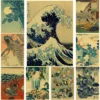The Curious History of the Knock-Knock Joke
Knock knock! Who’s there? Kids of all ages delighting in a beloved, if corny, comedy tradition. But how did such a silly conversational joke become forever embedded in popular culture? The surprisingly long story arcs from Shakespearean drama to flapper slang to viral sensation across 1930s America. This playful form’s lasting appeal owes much to wordplay and whimsy – yet also a touch of psychological unease.

Wordplay Roots Stretch to Shakespeare
Most joke genres skew timeless, but knock-knocks uniquely fuse pamphleteer wit, linguistic trends and vaudeville timing into cultural comedy couture. Their setup marries repetition, surprise and dramatic irony: an unsuspecting listener baited through a verbal trapdoor by the joke teller. This formula intrinsically amuses humans. But just when did it emerge?
Some literary historians now point to Shakespeare as an improbable knock-knock progenitor. Amid the brooding tragedy of Macbeth lies a grimly comic gatekeeper scene where a porter imagines knocking at Hell’s gates, then switches perspectives to voice the devil reactively knocking back in surprise mimicking later joke structure. In Act II, Scene 3, a porter pretends to answer the knock at the door, delivering a rambling soliloquy in the process:
“Knock, knock! Who’s there, i’ the name of Beelzebub? Here’s a farmer, that hanged himself on the expectation of plenty: come in time; have napkins enow about you; here you’ll sweat for’t.”
“Knock, knock! Who’s there, in the other devil’s name?” the porter exclaims, then adopting Satan’s voice replies “”Faith, here’s an equivocator that could swear in both the scales against either scale; who committed treason enough for God’s sake, yet could not equivocate to heaven”.
The passage conveys knock-knock’s essential call-and-response DNA. By fracturing perspective between porter and (anti)hero/devil, Shakespeare implicitly devised a primal joke template awaiting later comedic refinement.
The Knock-Knock Craze Goes Viral
But it took roughly three centuries for knock-knocks to fully ripen into beloved formula. Post-Victorian era “Do You Know” jokes birthed closely related call-and-response pranks minus the knock conceit. These eventually cross-pollinated with other influences like flapper slang and urban vaudeville to hatch knock-knocks’ modern crystallization.
The jokes fully exploded into mainstream consciousness in the mid-1930s as pop culture sensation sweeping America. The fuse seems to have been Pennsylvania Governor George Earle jokingly proposing then-Colonel Frank Knox as a mock presidential candidate during 1936’s RNC convention, spurring a viral knock-knock craze across media nationwide.
This led to a nation-wide fascination with Knox-related knock-knock jokes:
“Knock knock!” “Who’s there?” “Mr. Knox.” “Mr. Knox who?” “Mr. Knox the walls down!”
Seemingly overnight, knock-knock songs, skits and contests dominated radio, public events and even advertising. Orchestras wove crowd-participation bits into live shows as audiences clamored to deliver punchlines like: “Ammonia bird in a gilded cage!” Fast-clipping wits showcased clever improvisation skills through rapid-fire verbal sparring.
For a brief glorious window with war looming, knock-knock fever offered whimsical respite from mounting societal tensions. But as with all fads, enthusiasts moved on – even if the infectious musical wordplay endured lodged in cultural memory. This is just the beginning of the history of the knock knock joke.
The Subversive Psychology Behind Knock-Knock Jokes
Still, a bitter aftertaste accompanied knock-knock mania’s aftermath. Critics like researcher Laird blasted knock-knocks as “absurd stunts” indulged in by only “pseudo-intellectual” fools and children. Some analysts even likened habitual punning with psychological conditions like Germany’s documented “Witzelsucht” disorder.
Underneath lay implication that jesters lose social status for breaking unwritten rules of seriousness. This may reveal why knock-knocks sparked such contradictory reactions. Their repetitive structure flouts several maxims of functional conversation like relevance and sincerity. Yet as benign violations of linguistic norms, they teasingly challenge real-world power dynamics.
Perhaps therein lies the jest’s lasting magical intrigue: Ritualistically knocking down social barriers through wordplay so simple anyone can generate new variations almost subconsciously. This DIY humor simplicity harkens to deeper desires for imaginative autonomy and self-expression – drives underpinning most creative arts, music and literature too.
And despite eras demonizing puns as sickness or silliness, wordplay endures culturally beloved for playfully nudging listeners ever-so-slightly outside conversational comfort zones. In effect, quirky linguistic tickles poke holes in oppressive systems. Behind knock-knocks hides subtle yet profound comedy catharsis.

Knock-Knocks Endure from Bard to Kindergartners
So next time you hear kids unleash the latest knock-knock tongue twisters, consider the history of the knock knock joke and the grander social forces beyond the silliness. Like stage comedy tracing to ancient religious rituals, these jokes channel deeper significance. By ritually suspending rulesets, new perceptual possibilities emerge – a creative neurological necessity.
And within knock-knocks lies continuity between punchline-slinging jokesters young and old across ages. Shakespeare debuted proto-puns hinting how wordplay humor unites humanity across generations through history. Thank goodness – because for all their corniness, it seems knock-knock jokes will persist so long as kids delight in subversively silly linguistics.
After all, everyone can relate to that exciting moment hearing “Knock knock!” then leaning closer in eager anticipation…Who’s there?


 Additional Fun Facts
Additional Fun Facts

